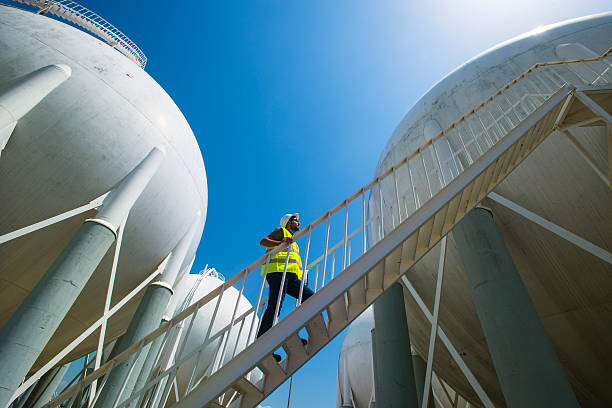
In the complex world of oil and gas, petroleum tank storage is the unsung backbone of the global supply chain. Whether you’re a fuel distributor, bulk trader, refinery operator, or procurement manager, understanding how petroleum tank storage works is essential for ensuring uninterrupted operations, cost efficiency, and regulatory compliance.
What Is Petroleum Tank Storage?
Petroleum tank storage refers to the infrastructure used for the containment, preservation, and handling of refined petroleum products and crude oil in bulk. These tanks are strategically located near ports, refineries, pipelines, and industrial zones to facilitate efficient product access, blending, and dispatch.
This storage acts as a critical buffer between production and consumption, allowing operators to manage supply-demand fluctuations, plan shipping logistics, and avoid demurrage charges.
Why Is Tank Storage Critical in the Petroleum Supply Chain?
Operational Flexibility: Storage capacity enables companies to time their fuel release based on market price trends.
Security of Supply: Helps hedge against supply chain disruptions and delays.
Blending & Quality Control: Storage terminals often facilitate fuel blending and quality testing.
Regulatory Compliance: Provides safe containment to meet HSE standards, reducing environmental and financial risks.
Types of Petroleum Storage Tanks
1. Fixed Roof Tanks
Best For: Low-volatility fuels such as diesel or kerosene.
Shape & Size: Cylindrical with conical or dome-shaped roofs; typically ranges from 1,000 to 30,000 m³.
Advantages: Cost-effective, simple design, low maintenance.
2. Floating Roof Tanks
Best For: Volatile fuels like gasoline and naphtha.
Shape & Size: Open-top cylindrical tanks with a floating roof; large volume (up to 100,000 m³).
Advantages: Reduces vapor loss and fire hazard by minimizing headspace.
3. Bullet Tanks (Horizontal Pressure Vessels)
Best For: LPG, Propane, and Butane storage.
Shape & Size: Horizontal cylindrical with hemispherical ends; high-pressure rating.
Advantages: Built to handle pressurized storage safely; compact footprint.
4. Spherical Tanks
Best For: LNG and high-pressure volatile gases.
Shape & Size: Spherical design supports uniform pressure distribution.
Advantages: Minimal surface area, high structural integrity.
Key Features of Modern Tank Terminals
Heating & Insulation: Essential for products like heavy fuel oil (Mazut) or bitumen.
Tank-to-Ship & Tank-to-Truck Connectivity: Enables fast and flexible dispatch.
Automation Systems: Real-time inventory monitoring and valve control.
SGS Certification: Third-party verification for volume, quality, and compliance.
How to Choose the Right Storage Partner
When evaluating tank storage providers, consider the following:
Location Accessibility: Proximity to ports, rail, or pipelines.
Tank Compatibility: Tank types and material compatibility with your product.
Operational Track Record: Experience in handling your product category.
Compliance Standards: ISO certification, environmental controls, and insurance coverage.
Value-Added Services: Blending, heating, sampling, customs clearance, etc.
Final Thoughts
Petroleum tank storage is not just about containment—it’s about strategic advantage. Whether you’re stockpiling during off-peak pricing, securing supply in a high-demand window, or ensuring quality control before distribution, the right tank facility empowers smarter decisions.
At Plegel Oil Company Incorporated, we specialize in safe, compliant, and scalable petroleum tank storage solutions across U.S. and international markets. Let our infrastructure fuel your operational growth.
Need Tank Storage Support? Contact Us to discuss available storage terminals, pricing structures, and logistics integration for your fuel supply chain.
